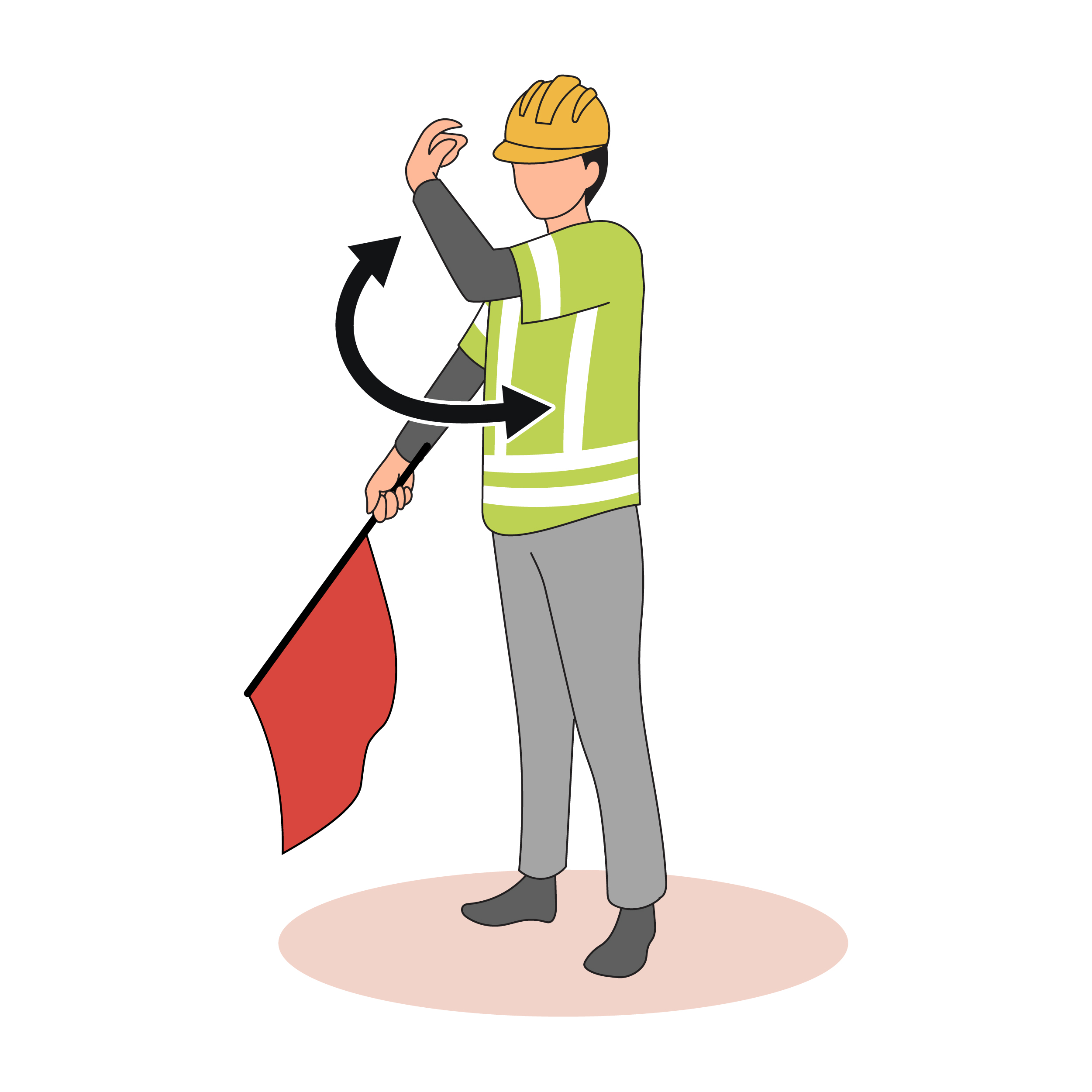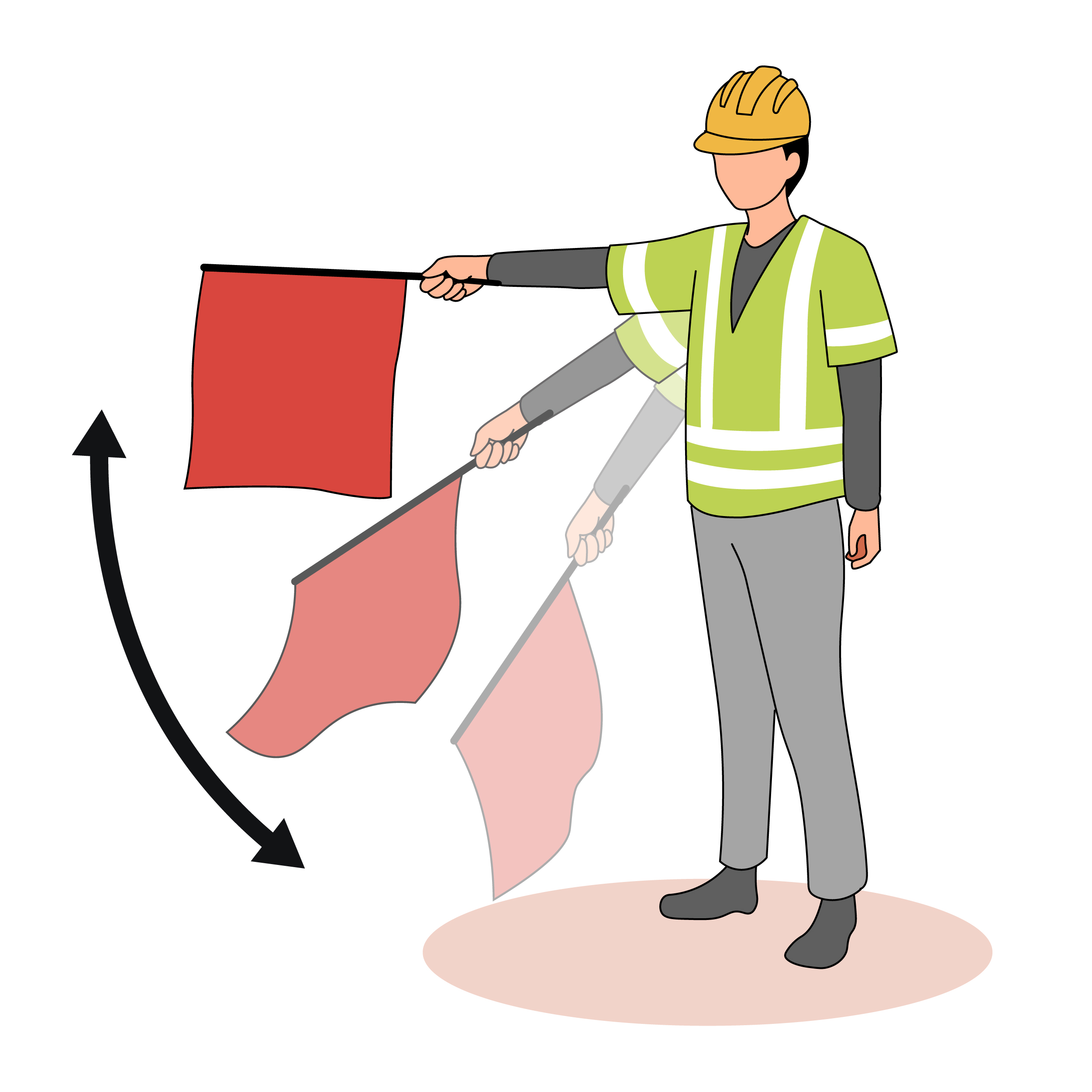According to the Manual on Uniform Traffic Control Devices, or MUTCD, a “work zone” is any part of the roadway where construction, maintenance, or utility work is being done (see MUTCD 6B.02). The MUTCD defines a high speed work zone as any roadway where the speed limit is over 45 mph.
If work will last for more than a short time, a Temporary Traffic Control, or TTC zone, will be set up to protect the work zone. A TTC zone is an area where the traffic flow is temporarily changed using traffic control devices like warning signs and cones or barrels. But even when these measures are in place, all work zones present hazards for workers, and high speed roads increase the risks. If you’re working on a high speed road, you should always take extra care to protect yourself and your team.
Wear the right high-visibility work apparel
Work apparel helps protect you from flying or falling debris, and makes you more visible to drivers and other workers.
Before you start work, make sure you’re wearing the proper MUTCD-approved apparel and hard hat for the time of day and conditions. There are different apparel requirements for day and night work. Nighttime is usually defined as ½ hour before sunset to ½ hour after sunrise, or any time when visibility may be limited due to weather or other conditions.
In addition, you should have on clothing with long pants and sleeves, hard-soled, closed-toe shoes, sturdy work gloves, as well as eye protection. It is also highly recommended that you wear hearing protection on high-speed roads where the noise levels can be very high.
Have a tailgate meeting
It is recommended that your team hold a tailgate meeting at the beginning of each day to define roles and responsibilities, inspect your equipment, plan for that day’s activities, discuss hazards, review safety measures and communications, and plan for emergencies.
Topics you may want to discuss include:
- Where will you park your vehicle in the work zone?
- What equipment will you be using (such as a ladder or aerial lift)? Are there any associated hazards or precautions you need to know about?
- What hazards are present at the job site, such as uneven terrain, ledges or other fall hazards, debris, or things overhead?
- What warning signal will your team use if a vehicle or other hazard encroaches on the work site?
Your tailgate meeting does not have to be long, but it should be thorough. Everyone on the team should feel prepared before they enter the work zone.
Keep yourself safe in the work zone
Once you arrive in the work zone, you should head directly to the work area and stay there. TTC zones incorporate a lot of extra space so that errant vehicles have time to stop without hitting workers or equipment. Workers should not go outside of the area defined by cones or barrels, and stay out of the buffer space and taper. If you don’t know where the boundaries are, ask your team lead or supervisor for guidance.
Once you are in the work area, always keep your head on a swivel, stay alert, and be aware of becoming desensitized to hazards. It’s easy to start ignoring traffic after a while, so workers may need to remind themselves of the dangers.
Stay aware of the direction that traffic is moving, and try not to turn your back to it unless you have a spotter. If you are working with a spotter, know who they are and what warning signal they will give if you need to move out of the way.
If you do need to escape an oncoming vehicle, the best route is 90 degrees away from the direction of traffic. This usually means that you would run onto the shoulder of the road. But depending on where you are working, your escape route may be different. Think about what you will need to do to get out of the way of a vehicle, whether that includes jumping or climbing over a barrier, or going into a different direction.
Keep your team informed. Staying safe in any work zone takes alertness, communication, and teamwork. Take your time to do things safely, and work together to protect each other from hazards!







